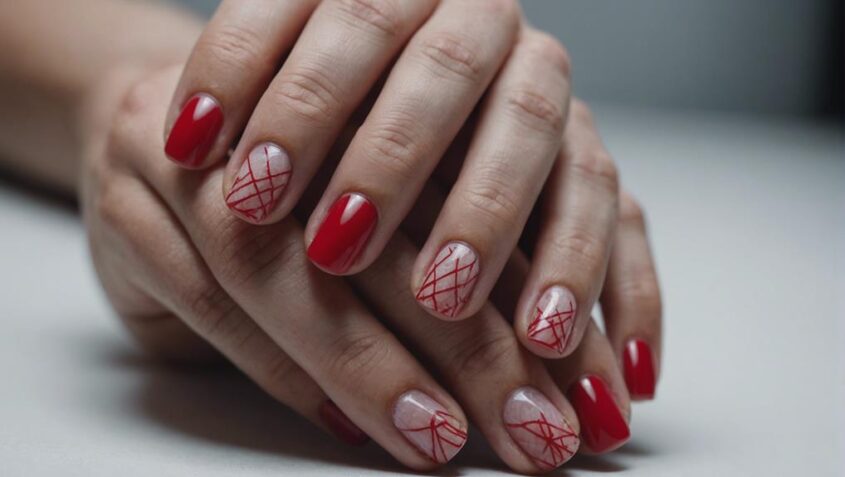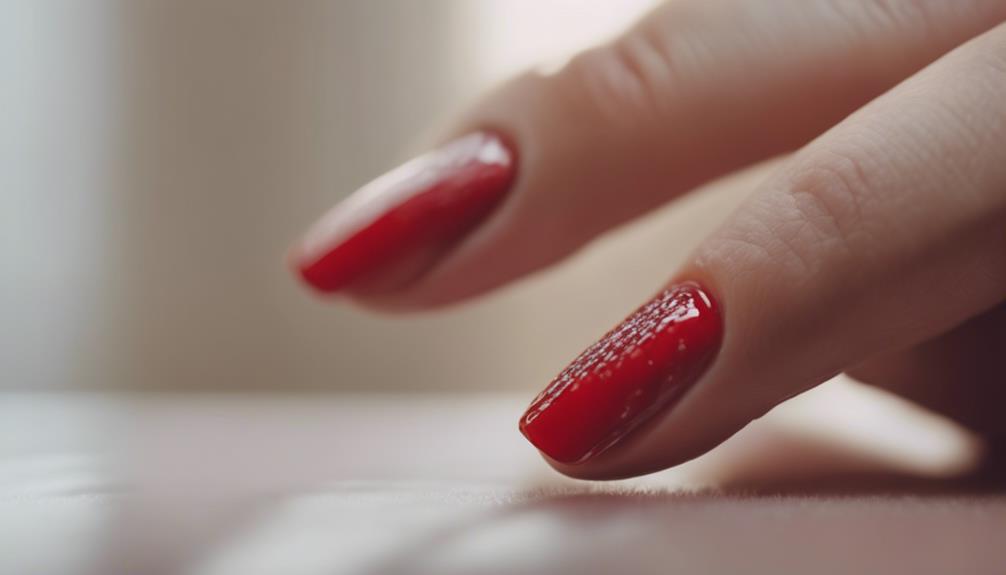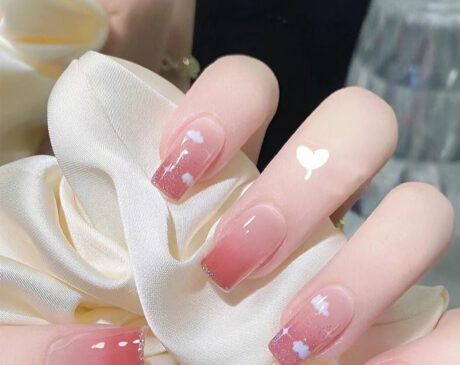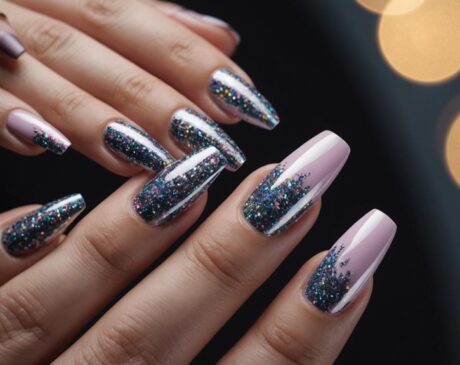Why Do My Fake Nails Hurt so Bad?

Fake nails can cause significant discomfort and pain due to incorrect sizing or improper adhesive application. When fake nails press too tightly against your natural nails, it can lead to pressure and discomfort. Ensuring proper sizing and using innovative solutions can enhance comfort. Moreover, issues like brittle nails, nail fungus, or allergic reactions to nail materials can also contribute to the pain. Tips for pain alleviation include moisturizing, avoiding excessive pressure, and giving your natural nails breaks. Understanding these factors can help improve nail health and reduce discomfort.
Key Takeaways
- Ensure correct sizing to prevent discomfort and pain.
- Address underlying nail health issues for pain relief.
- Avoid allergic reactions to nail materials causing pain.
- Use proper adhesive techniques to minimize discomfort.
- Implement pain alleviation tips for fake nail wearers.
Incorrect Nail Application
Improper application of fake nails can lead to discomfort and pain, often caused by incorrect nail sizing or improper adhesive techniques. When fake nails are not applied correctly, they can press too tightly against the natural nail, causing pain and even potential damage. One common mistake is using nails that are too large for the natural nail bed, leading to pressure and discomfort. Additionally, if the adhesive is not applied evenly or if too much adhesive is used, it can seep onto the skin surrounding the nail, causing irritation and pain.
To avoid these issues, individuals should ensure that fake nails are properly sized to fit their natural nails. They should also carefully follow the instructions for applying adhesive, ensuring that it is spread evenly and sparingly to avoid excess seepage. Innovation in fake nail application techniques, such as using adjustable sizing options or new adhesive formulas designed for better comfort, can help prevent discomfort and pain associated with fake nails. By paying attention to detail and using innovative solutions, individuals can enjoy stylish fake nails without the unnecessary discomfort.
Improper Sizing of Fake Nails
One common issue encountered with fake nails is the improper fitting of the nails to the natural nail bed. When fake nails are not sized correctly, it can lead to discomfort and pain for the wearer. Innovations in the beauty industry have introduced techniques such as measuring the natural nail bed precisely to ensure the fake nails match the size and shape accurately.
Improperly sized fake nails can cause pressure on the nail bed, leading to soreness and even potential damage to the natural nails underneath. To address this issue, nail technicians can utilize tools like sizing charts and molds to customize fake nails that fit comfortably and securely. Advancements in materials used for fake nails, such as flexible acrylics and soft gels, also contribute to a more comfortable fit.
Underlying Nail Health Issues

Addressing potential underlying nail health issues is crucial for individuals experiencing discomfort or pain from their fake nails. When encountering pain or discomfort with fake nails, it may not always be due to improper sizing; underlying nail health problems could be the root cause. Here are some common nail health issues that may contribute to pain or discomfort with fake nails:
- Brittle Nails: Weak and brittle nails can cause pain and breakage when fake nails are applied.
- Nail Fungus: Fungal infections can lead to pain, discoloration, and thickening of the nails.
- Psoriasis or Eczema: Skin conditions like psoriasis or eczema can affect the nails, causing pain and discomfort.
- Nutritional Deficiencies: Lack of essential nutrients like biotin or iron can result in weak, painful nails.
Allergic Reactions to Nail Materials
When considering the potential causes of discomfort or irritation related to fake nails, one significant factor to explore is the occurrence of allergic reactions to nail materials. Allergic reactions can manifest as redness, swelling, itching, or even pain around the nail area, indicating an adverse response to the substances used in fake nail application. It is crucial to identify the specific material triggering the reaction to prevent further discomfort and ensure nail health.
To better understand common nail allergens, refer to the table below:
| Nail Material | Potential Allergic Reactions |
|---|---|
| Acrylics | Contact dermatitis, itching |
| Formaldehyde resin | Redness, swelling, blistering |
| Methacrylates | Irritation, rash, itching |
| Cyanoacrylate glue | Skin irritation, redness |
| Latex | Allergic contact dermatitis |
Tips for Pain Alleviation and Prevention
To alleviate and prevent pain associated with fake nails, consider incorporating gentle nail care practices and ensuring proper application techniques. Here are some innovative tips to help you maintain healthy and pain-free nails:
- Proper Sizing: Ensure that your fake nails are not too tight or too loose, as this can cause discomfort and pain.
- Moisturize Regularly: Keep your natural nails and cuticles well-moisturized to prevent dryness and pain.
- Avoid Excessive Pressure: Be gentle with your nails and avoid putting excessive pressure on them to minimize discomfort.
- Regular Maintenance: Schedule regular breaks between nail applications to give your natural nails time to breathe and recover.
Frequently Asked Questions
Can Fake Nails Cause Long-Term Damage to My Natural Nails?
Can fake nails cause long-term damage to natural nails? Consistent use of artificial nails can weaken natural nails over time. Improper application or removal techniques may lead to thinning, brittleness, and potential nail bed damage.
How Do I Know if My Fake Nails Are Too Heavy?
To determine if fake nails are too heavy, monitor for discomfort, pain, or restricted movement. Heed warning signs like throbbing, tenderness, or nail bed discoloration. Consult a nail technician for professional evaluation and potential adjustments.
Will Fake Nails Affect My Ability to Use Touchscreens?
Fake nails can impact touchscreen use due to increased thickness. This can hinder precision and responsiveness. To mitigate, opt for thinner nail enhancements or stylus pens. Balancing style and functionality is key for seamless digital interactions.
Can Fake Nails Lead to Fungal Infections in the Nails?
Fake nails can potentially lead to fungal infections in the nails due to trapped moisture. Proper nail care, hygiene practices, and ensuring nails are not too tight can help prevent this issue. Consulting a professional is recommended.
Are There Specific Activities I Should Avoid With Fake Nails?
When wearing fake nails, it's advisable to avoid activities that involve excessive pressure or impact on the nails, such as heavy lifting, typing with excessive force, or using nails as tools, to prevent discomfort or damage.




